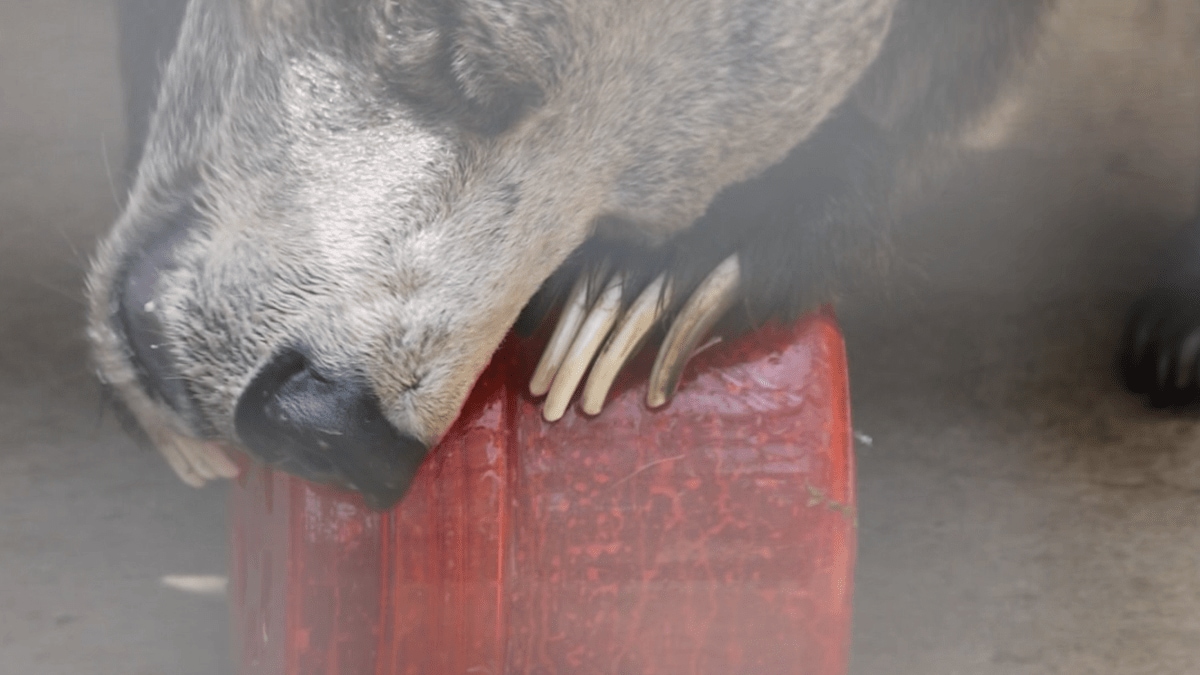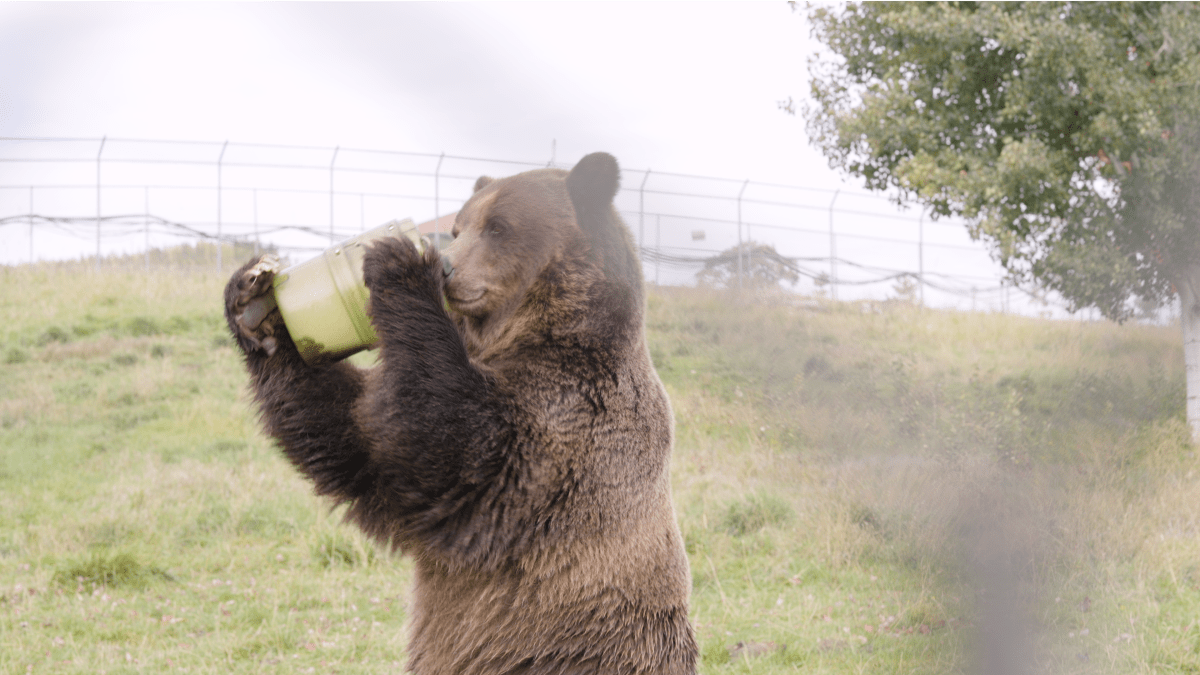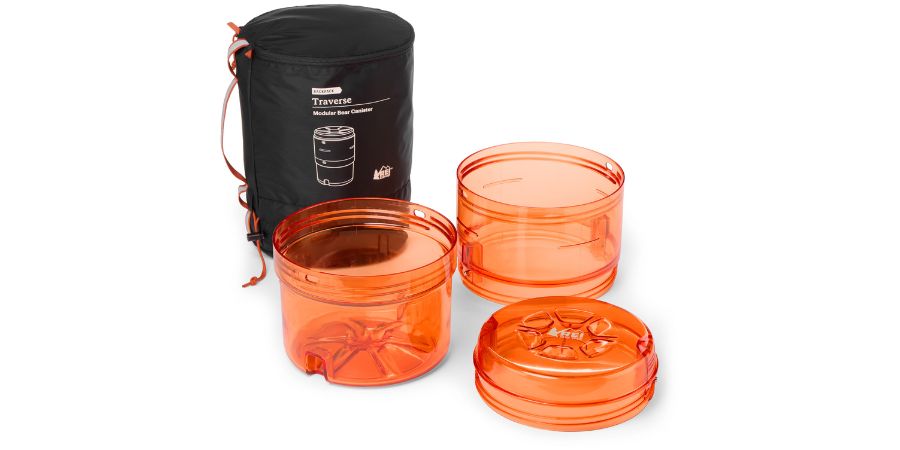When the REI Co-op Traverse bear canister hit the shelves this year, it changed the game for anyone who camps or backpacks in bear country. Traditional bear-resistant food canisters come in different sizes, requiring multiple cans for trips of various distances or forcing you to carry a larger size than you need for an entire trip. The unique modular design of the new REI Co-op Traverse bear canister offers two sizes in one product. Grab the smaller 6.75-liter size for shorter trips or the larger 11.25-liter size for longer ones. As you eat your food, nest one section into the other to free up pack space.
Made of durable polycarbonate, the container is certified bear-resistant by the Interagency Grizzly Bear Committee to protect your food from animals. It’s also see-through, so customers can easily see their food inside. And the bright orange color makes it easy for humans to spot even in the dark. (Bears smell food long before they see it.)

BTS: Bear tested, human approved
“We did two different kinds of research methodologies for the bear canister,” explains Bryan Jackler, REI product researcher. One test involved people; the other one involved bears.
Initial testing with people centered on ease of use and functionality of the modular system. The team used prototypes that they created with a 3D printer. “The canister was the first large product we ever printed on a 1-to-1 scale,” explains Devin Paschke, manager of engineering and product development for REI and the brain behind the bear canister.
The co-op team conducted field testing with several printed prototypes—though not in bear territory—and used the feedback to make improvements. After multiple iterations of 3D-printed prototypes and testing, they created a durable polycarbonate canister ready to put to the test on grizzly bears.
One morning in late 2023, Paschke and Nate Bullock, REI senior product designer, drove to the Washington State University Bear Center in Pullman to participate in the Interagency Grizzly Bear Committee (IGBC) certification process. The Bear Center and its resident grizzly bears regularly test items like coolers, dumpsters and garbage cans for bearproofing effectiveness.
“We were able to watch the bears interacting with the canister in real time,” says Paschke. The grizzlies are released into a pen area with a canister filled with temptations like donuts, honey, kibble and Twinkies. “They took the canister onto the hard dirt, the grassy ground and the concrete and just beat it up, throwing it against logs, the walls, whatever. Some used brute muscle. Some used what the Bear Center calls ‘chest compressions,’ and some were biters, using their teeth.”

To be certified bear-resistant, a product must withstand one hour of active bear interaction without gaining access to the product. For example, no holes on the inner wall could be larger than one-quarter inch, says Gardner. Rolling or dragging the canister doesn’t count as active time, he adds. Biting, clawing, throwing and other maneuvers do.
The grizzlies certainly tried it all. One submerged the canister in a trough of water, hoping the water-logged container would create a bigger impact, Bullock says.

Another took the canister into its den, a roughly 10×10 cinderblock room. She stood on hind legs and threw it into the wall so hard it bounced off and hit another. “It didn’t break. It didn’t crack,” says Dave Gardner, REI senior test engineer who observed her. “That was really cool thing to see. Just one of those things where you realize how powerful these animals are.”
During the first test with grizzlies in 2023, one bear managed to bit into the upper corners of the lid. Persistent bears can turn small holes into bigger ones, so that version failed to meet the IGBC standards, Gardner says.
The bears won.
Back to the drawing board
After analyzing the damage, the co-op refined the design. The bears had been able to get a good purchase on the lid with their teeth, says Gardner. So the team focused on modifying the lid and the thickness of the material. In the lab, they even created a metal probe in the size and the shape of a bear tooth to use against the product.
The team returned in the spring 2024 with a stronger prototype for a second trial round. Because of the modular design, both parts—the smaller configuration and the larger size—had to be individually tested.
This time, the canister won.
“Knowing we had a product that actually, ultimately outsmarted them was pretty cool,” Gardner says.
That wasn’t the end of testing, though. The product team sent the bear-approved canister into the field to put it through more rigorous testing with humans. Over nearly 30 trials, backpackers of all skill levels, from beginner to advanced, evaluated it in a range of temperatures and climates.
“People really loved how the can was modular,” says Jackler. “This is a little bit of a game changer, something that they hadn’t seen before.” Some people did feel that the canister may be slightly heavier, but that the modularity was well worth that extra bit of weight.”
Testers liked the high-visibility color. “I know I’ve just been fumbling around the woods a bunch of times trying to find mine,” says Jackler. “That orange really stands out.”
How the two-in-one modular design works

The two-in-one bear canister consists of three main pieces that work together in a modular design for different food storage needs. The threaded lid screws onto the middle piece when using the canister in its large size. Or screw it onto the bottom piece when using the canister in its smaller configuration. In the smaller size, the middle piece stacks seamlessly outside of the bottom section. The system nests neatly—and conveniently—together.
The user-friendly design incorporates two metal push buttons that are easy to operate without tools—one located on each side. To open the canister, hold it securely with one hand while compressing button No. 1, followed by a twist of the lid, and then compress button No. 2. This ensures comfortable usability for people with smaller hands and those wearing gloves, making it accessible for a range of users.
“We intentionally incorporated clear instructions and visual cues on both the product itself and the stow sack, knowing that the canister’s unique modular design would be unfamiliar to many users,” says Bullock.
Its included carry bag features printed instructions for opening, closing and converting the canister between sizes. The carry bag’s size can be adjusted; it’s reflective for visibility under a flashlight or headlamp. Lash loops make it easy to attach on the outside of a backpack, to the webbing on a raft or via carabiner and strap in a kayak.
